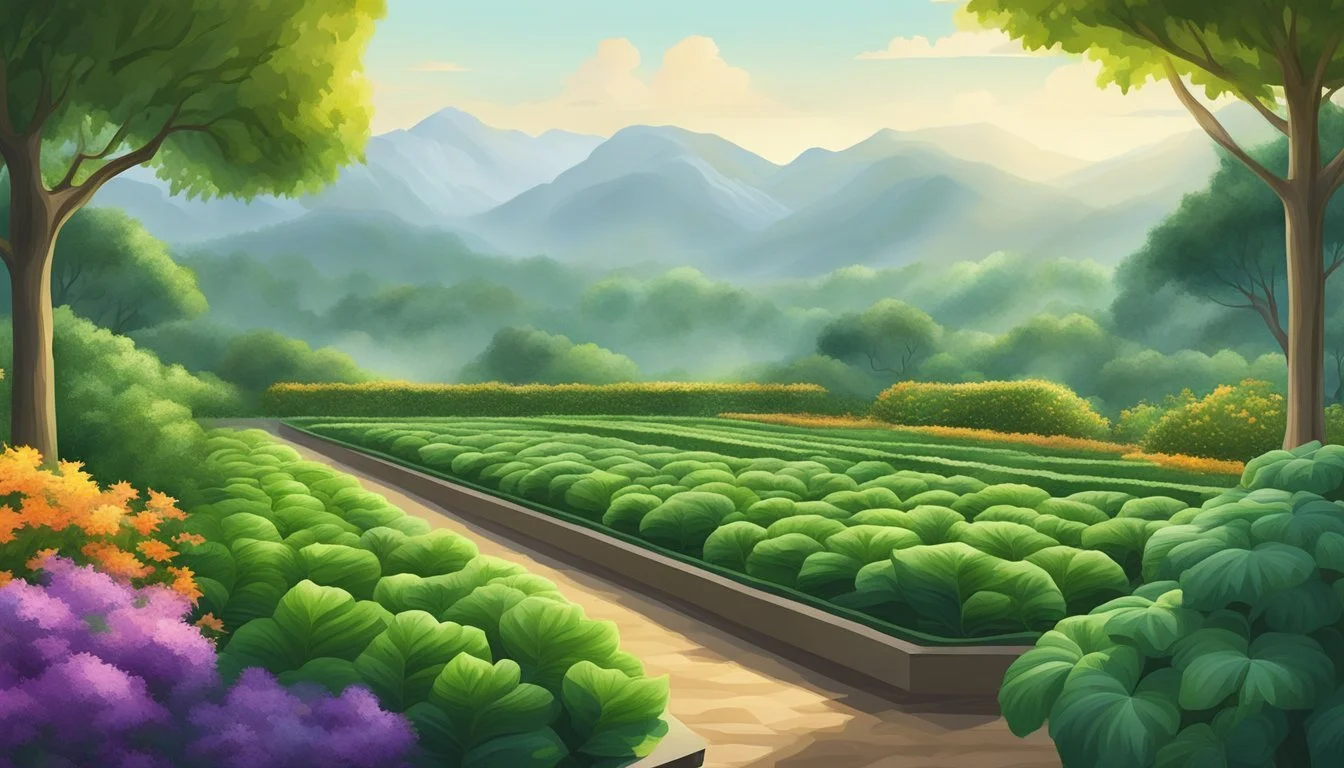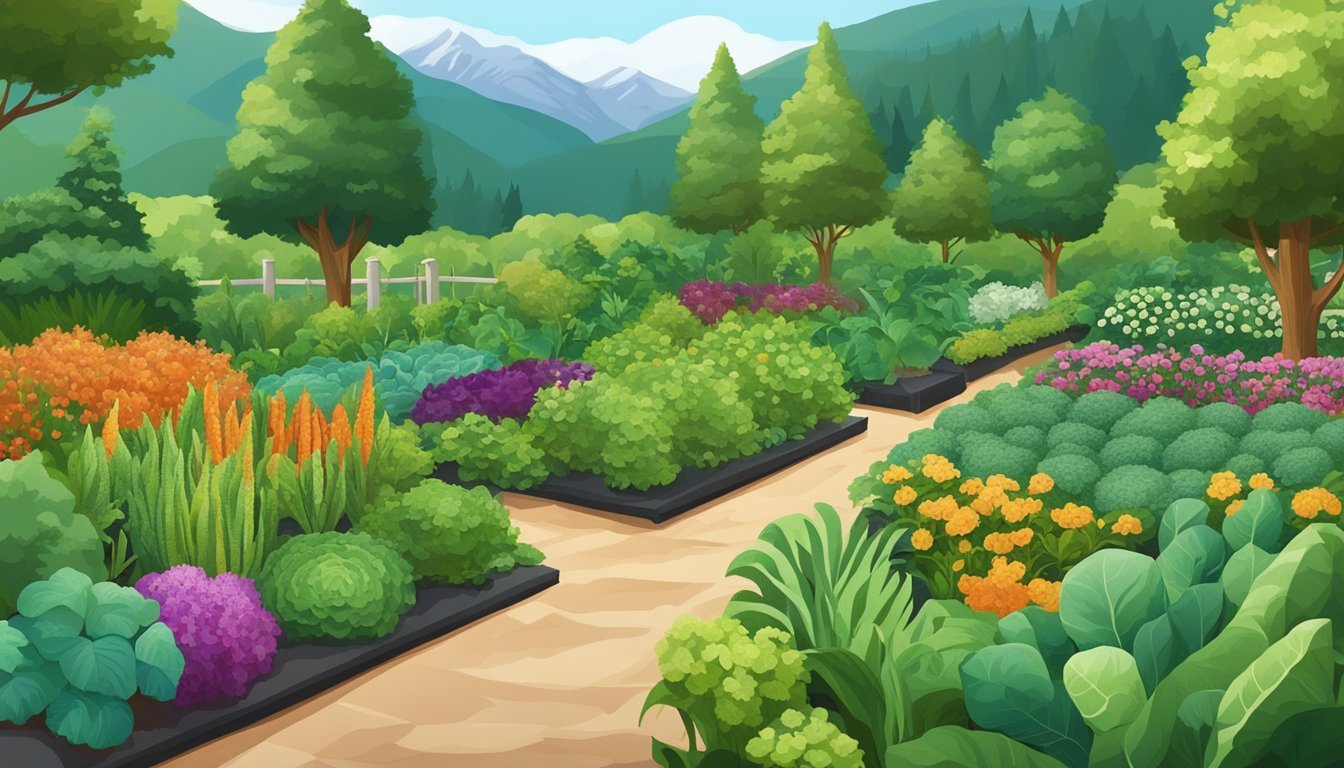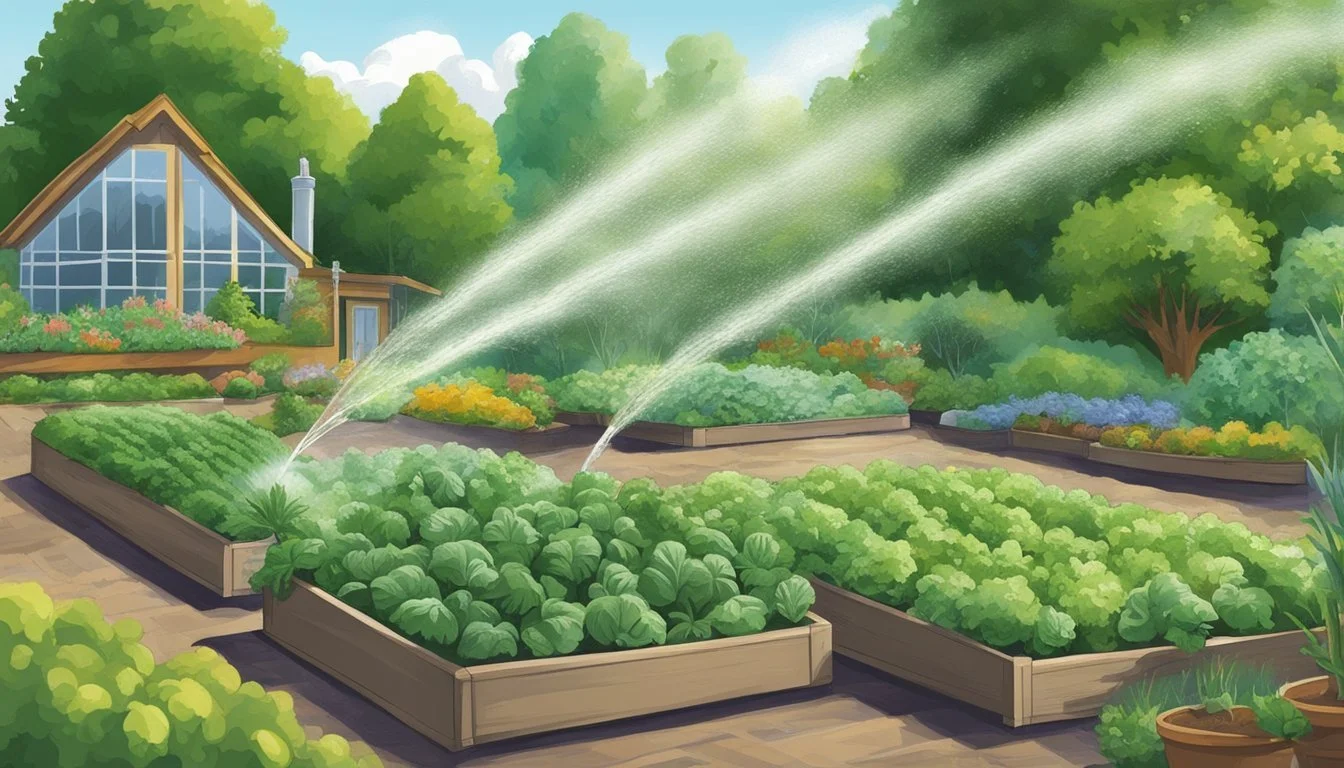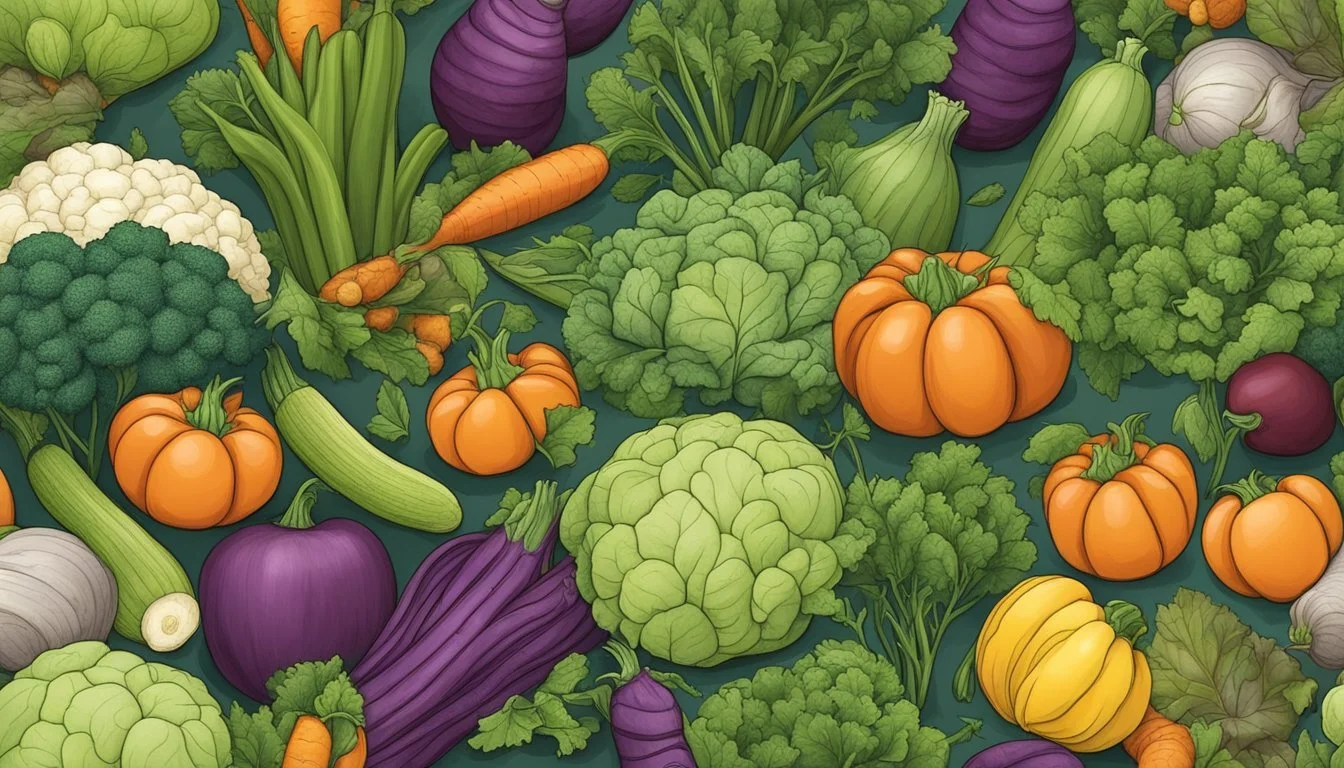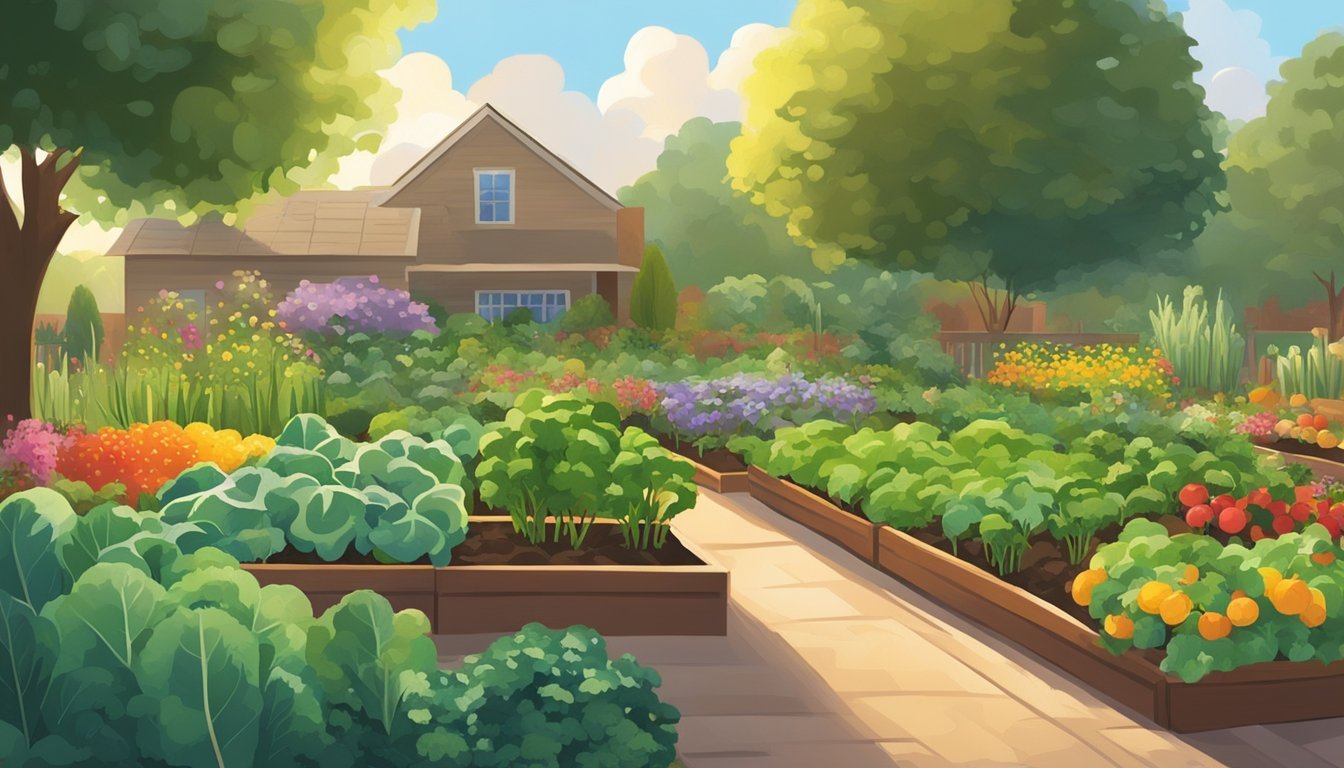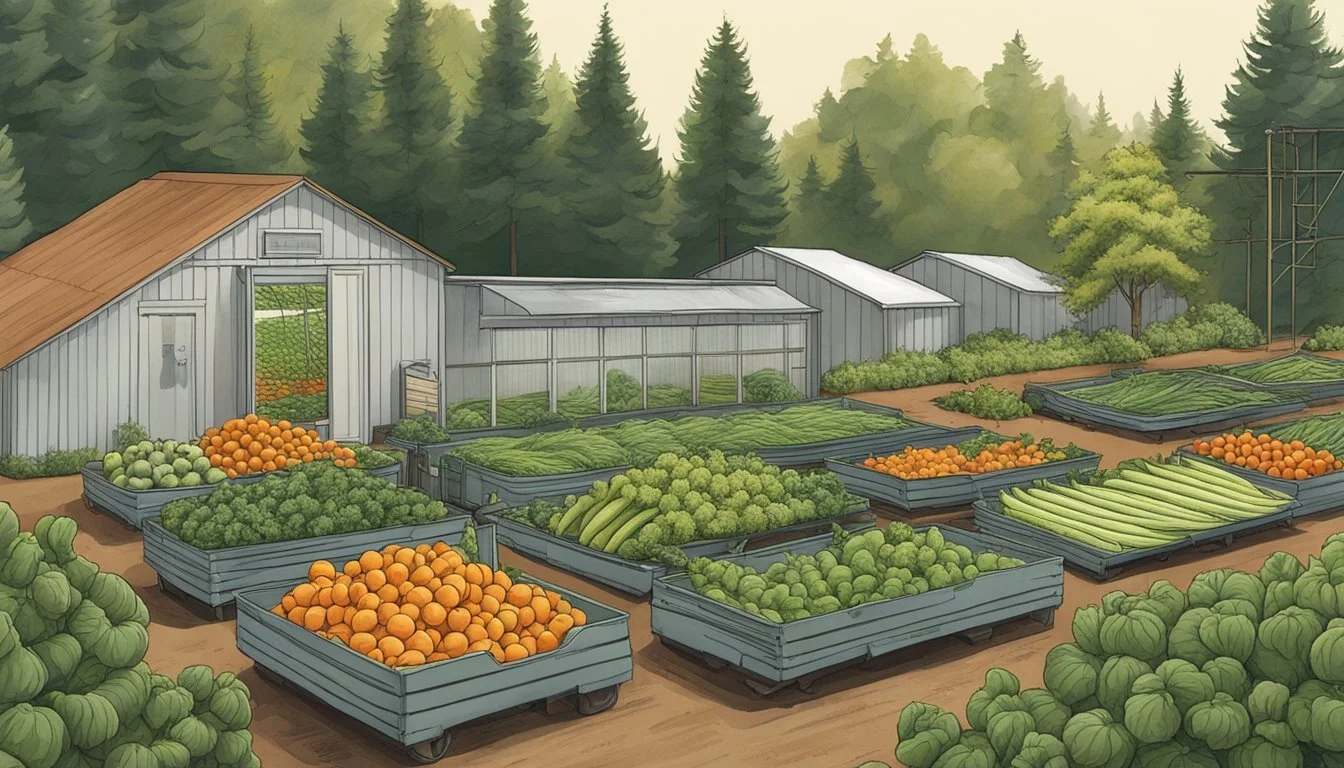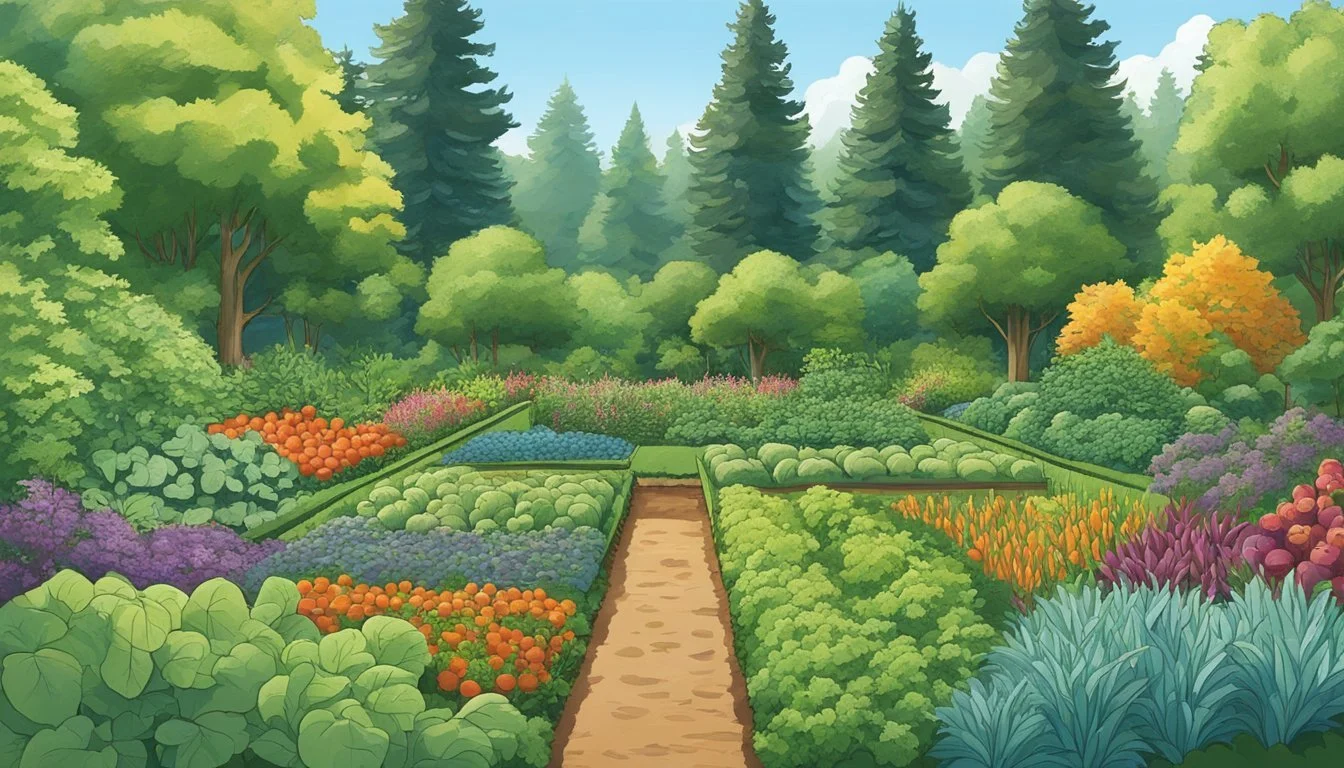Vegetable Gardening in Oregon
Year-Round Tips for a Bountiful Harvest
This Article is Part of Our Guide on Vegetable Gardening by State
Vegetable gardening in Oregon benefits from the state's mild and temperate climate, which is conducive to cultivating a wide variety of vegetables. The region's long growing season and abundant rainfall allow gardeners to produce fresh produce throughout most of the year. Oregon's diverse climate zones also offer the flexibility to grow many types of vegetables, from leafy greens to root crops, depending on the specific regional conditions.
Incorporating efficient garden planning and the selection of suitable vegetable varieties is crucial for a successful harvest. Gardeners often use raised beds and plan for succession planting to maximize space and yield. Prioritizing crops such as lettuce, which is cold hardy and low-maintenance, enables year-round cultivation, including the cooler spring and fall months when frost may be present.
Oregonians are known to use smart gardening techniques such as creating walking paths to minimize soil compaction and rotating crops to maintain soil health. Perennial vegetables may be planted along garden edges, and methods like using organic mulches or cover crops are employed to enhance soil fertility and manage weeds. With the right planning and care, vegetable gardening in Oregon can be a rewarding endeavor that yields a bountiful harvest season after season.
Planning Your Vegetable Garden
A successful vegetable garden in Oregon begins with proper planning. Gardeners must take into account specific regional climates, suitable locations, the right vegetable selections, and a thoughtful garden layout.
Choosing the Right Location
The ideal location for a vegetable garden receives 6-8 hours of sunlight each day. Proximity to a water source simplifies irrigation needs, and the area should have good drainage to prevent waterlogged soil. Shelter from strong winds and frost pockets can protect tender plants.
Understanding Oregon's Climate Zones
Oregon is divided into four distinct climate zones, each influencing what and when to plant. Gardeners should refer to the Oregon State University Extension Service for detailed zone information to ensure they choose varieties and planting dates aligned with their region's climate.
Zone 1: Coastal regions
Zone 2: Western valleys
Zone 3: Mountain regions
Zone 4: High desert
Selecting Vegetables to Grow
Gardeners should select vegetables that will thrive in their specific Oregon climate zone. Cool-season vegetables like lettuce and spinach can be planted in early spring or fall. Warm-season crops, such as tomatoes and peppers, require more heat and should be planted after the last frost date.
Designing Your Garden Layout
A well-designed garden layout includes:
Accessibility: Ensure paths are wide enough for comfortable movement around the garden.
Rotation: Plan for crop rotation to prevent soil depletion and disease buildup.
Spacing: Adequate space between rows allows for air circulation and ease of maintenance.
Succession planting: Short rows or sections for different vegetables enable season-long harvesting.
Creating a layout with raised beds or defined sections can improve soil management and reduce the need for bending and stretching during maintenance.
Soil Preparation and Management
Proper soil preparation is crucial for successful vegetable gardening in Oregon. It involves assessing the soil quality, enriching the soil with organic matter, and regulating soil pH and nutrient levels to promote vigorous plant growth.
Assessing Soil Quality
One must first evaluate the existing soil condition. It is important to consider soil texture and structure, as good soil should have a balanced mix of sand, silt, and clay. Gardeners can send a soil sample to a local extension service for detailed analysis, which provides insights into soil composition and guidance on amendments needed.
Enhancing Soil with Organic Matter
Adding organic matter is a vital step in improving soil health. Organic matter, such as compost or manure, boosts soil fertility and enhances its ability to retain moisture. It is recommended to incorporate 2 to 4 inches of organic material into the top 6 to 8 inches of soil. This should be done annually, preferably before planting season.
Compost: Improves soil structure and provides essential nutrients.
Manure: Should be well-rotted to avoid harm to plants and reduce the risk of contaminating food with pathogens.
Soil pH and Nutrient Levels
Soil pH significantly influences the availability of nutrients to plants. Most vegetables thrive in soil with a pH between 6.0 and 7.5. Gardeners can adjust pH by adding lime to raise it or sulfur to lower it, according to the soil test results. Regular testing for pH and nutrient levels helps tailor the soil amendment process to meet the specific needs of the garden. A balance of nitrogen, phosphorus, and potassium, the primary macro-nutrients, is essential for healthy vegetable growth.
pH test: Determines soil acidity or alkalinity.
Nutrient test: Guides the appropriate addition of fertilizers for balanced macro- and micro-nutrient content.
By carefully managing soil preparation, Oregon gardeners can create an optimal growing environment that will yield a bountiful vegetable harvest.
Planting Your Vegetables
Planting vegetables in Oregon requires understanding the benefits of different starting methods, adhering to regional planting schedules, and following guidelines for spacing and depth to ensure optimal growth.
Starting from Seeds Versus Transplants
Seeds are more cost-effective and offer a wider variety of vegetable options compared to transplants. They can be sown directly into the garden soil or started indoors to extend the growing season. When sowing seeds, ensure they have the appropriate conditions to germinate successfully. Transplants, on the other hand, provide a head start for the growing season and can be especially beneficial for longer-season varieties. It's important to harden off seedlings before transplanting to reduce shock and improve survival rates.
Best Planting Times in Oregon
Oregon's diverse climate necessitates careful consideration of planting times. The state's planting zones range from the cool, wet regions of the coast to the drier, more variable eastern areas. Gardeners should consult local extension services for specific dates but, generally, cool-season crops can be planted in early spring. Warm-season crops should be planted after the last frost date when the soil has sufficiently warmed.
Vegetable Type Suggested Planting Time Cool-season Early spring Warm-season After last frost
Spacing and Depth Guidelines
Correct spacing and depth are critical for the development of healthy vegetables. Seeds should be sown at a depth approximately three times their diameter. Adequate space between plants permits proper air circulation, light penetration, and growth. Below is a simplified guide for common vegetables:
Vegetable Spacing Between Plants Row Spacing Sowing Depth Lettuce 4-6 inches 12-18 inches 1/4 inch Tomatoes 18-24 inches 3-4 feet 1/4-1/2 inch Carrots 2-3 inches 12-24 inches 1/4-1/2 inch Bush Beans 4-6 inches 18-24 inches 1 inch
Following these guidelines will support a thriving vegetable garden that can be enjoyed throughout the Oregon growing season.
Watering and Fertilization
Proper watering and fertilization are crucial for a thriving vegetable garden in Oregon. They ensure vegetables receive essential nutrients and adequate hydration to grow robustly.
Irrigation Techniques
In Oregon, drip irrigation is considered an optimal method for watering vegetable gardens. It conserves water by delivering it directly to the plant roots, which reduces evaporation and minimizes water waste. A drip system can be designed to suit the specific needs of a garden, allowing for precise control of watering frequency and volume.
Advantages:
Minimizes water usage
Lowers the risk of plant diseases
The proper irrigation schedule accounts for climate variations across Oregon's regions. Gardeners should adjust their watering routine according to rainfall patterns, temperature, and soil moisture levels.
Fertilizer Types and Application Rates
Selecting the right fertilizer and determining the correct application rate is essential for vegetable garden success. Fertilizers can be classified as either organic or synthetic and should be chosen based on the specific needs of the garden soil and plants.
Compost
Manure
Bone meal
Blood meal
Synthetic Fertilizers:
Granular
Liquid
Slow-release
Fertilizers high in nitrogen are suitable for leafy vegetables, promoting vigorous green growth. A balanced N-P-K (Nitrogen, Phosphorus, Potassium) fertilizer is generally recommended for a well-rounded vegetable garden.
Application Guidelines:
Test soil before application to determine nutrient needs
Follow manufacturer's instructions for application rates
Apply during planting and periodically throughout the growing season
Fertilizer should be applied cautiously, as over-fertilization can lead to plant damage, water contamination, and disturbed ecological balance.
Pest and Disease Management
In Oregon's diverse climate, maintaining a healthy vegetable garden requires keen awareness of potential pests and diseases. Effective management hinges on timely identification and the implementation of appropriate control methods.
Common Pests and Control Methods
Aphids: These small sap-sucking insects can cause significant damage to vegetables by transmitting viruses and promoting sooty mold growth. Control methods include:
Introducing natural predators like ladybugs and lacewings.
Applying insecticidal soaps or horticultural oils.
Slugs: A common nuisance in damp environments, slugs chew on leaves and stems, especially during the night. Control methods involve:
Hand picking during evening hours.
Setting up beer traps to attract and drown slugs.
Sprinkling diatomaceous earth or copper tape around plants to deter them.
Flea Beetles: Recognizable by their small size and tendency to jump, flea beetles chew tiny holes in foliage. Control methods:
Employ crop rotation to disrupt life cycles.
Use floating row covers to physically block pests.
Apply kaolin clay as a deterrent.
Ants: These insects generally do not directly damage the garden but can farm aphids for their honeydew. Control methods:
Removing aphid infestations to reduce ant food sources.
Applying ant baits strategically to reduce populations.
Identifying and Treating Plant Diseases
Powdery Mildew: This fungus appears as a white to grayish powdery growth on leaves and stems. Treatment includes:
Increasing air circulation around affected plants.
Removing infected parts to prevent spread.
Applying sulfur-based or biological fungicides as necessary.
Plant diseases often display distinctive symptoms that aid in identification, such as unusual leaf spots, wilting, or growths. When a plant disease is suspected, gardeners should:
Isolate the affected plant to minimize spread.
Consult resources like the OSU Extension Service for accurate diagnosis and treatment options.
Implement recommended cultural practices or organic solutions before resorting to chemical treatments, always adhering to the label's instructions.
Growing Vegetables in Containers
Container gardening is a practical solution for many gardeners in Oregon, allowing flexibility in plant choice and placement. Whether one has limited garden space or challenging native soil conditions, containers can provide an accessible and productive alternative for growing a variety of vegetables, including potatoes, cucumbers, and tomatoes.
Container Selection and Placement
Container choice is crucial for success in vegetable gardening. Vegetables like potatoes and tomatoes require suitable containers:
Potatoes thrive in large containers like half whiskey barrels or fabric pots, which provide ample space for tuber development.
Tomatoes benefit from 5-gallon or larger containers, as a substantial root system supports their growth and fruit production.
Containers must have adequate drainage holes to prevent waterlogging, and placing them where they receive at least six hours of sunlight is also essential. For example:
Cucumbers prefer warm temperatures and consistent sun exposure; a southern or western exposure is often ideal.
Soil and Water Considerations for Container Gardens
Soil quality directly impacts the health and yield of container-grown vegetables. A well-draining potting mix is best, avoiding dense garden soil that can compact. Adjusting soil pH according to plant needs, aiming for a pH of 6.0 to 7.5, is also imperative.
For watering needs, because containers and small pots can dry out quickly, especially in warm weather, frequent watering might be necessary. This is especially true for containers with a diameter of less than 12-14 inches. For Oregon's climate, it is advisable to monitor soil moisture closely and water accordingly. For example:
Cucumbers with their deep root systems, demand consistent moisture levels, which can be maintained by daily checks and watering when the top inch of soil feels dry.
Seasonal Care and Maintenance
To ensure a thriving vegetable garden in Oregon, it's critical to focus on protective measures against climate extremes and effective weed management throughout the different seasons. These practices help to moderate soil temperature, conserve moisture, and maintain healthy, productive plants.
Mulching and Weed Control
Mulch serves as a vital tool in the garden to regulate soil temperature, retain moisture, and suppress weed growth. Gardeners should lay a 2-3 inch layer of organic mulch, such as straw or wood chips, around their plants. This layer acts as a barrier, deterring weed emergence and reducing the need for frequent watering.
Cool Season: Apply mulch once the soil has warmed to maintain moisture for germinating seeds in spring.
Warm Season: Refresh or add additional mulch to protect roots from heat and to conserve water during dry summer months.
Protecting Plants from Frost and Heat
Variable Oregon weather necessitates vigilant protection strategies for vulnerable plants.
Frost Protection:
Utilize cloches, cold frames, or frost blankets to shield plants from early and late-season frost events.
Tender seedlings and cool-season crops should be monitored closely and covered when frost is predicted.
Heat Mitigation:
During extreme heat, provide temporary shade using shade cloths to prevent scorching and to reduce heat stress on plants.
Consistent watering, early in the day, helps to keep plants cool and hydrated.
Using these methods helps to create optimal growing conditions for vegetables, preparing them to withstand the unpredictable shifts in Oregon's climate from cool, damp springs to warm, dry summers.
Harvesting and Storing Vegetables
Proper techniques in harvesting and storing vegetables are vital for maintaining the freshness, taste, and nutritional value of produce from the garden. These processes can differ based on the vegetable's color, ripeness, and storage needs.
Harvesting at Peak Ripeness
For optimal flavor and quality, vegetables should be harvested at their peak ripeness. Red tomatoes, green peppers, and yellow squash should have a deep, uniform color and firm texture. Purple eggplants should be glossy and slightly firm, while white cauliflower should remain compact without any discoloration. It's important to harvest during the cooler parts of the day to reduce stress on the plants and to preserve the quality of the vegetables.
Post-Harvest Handling and Storage
After harvesting, proper handling and storage are crucial. Vegetables should be cooled immediately to reduce respiration rates and slow down the deterioration process. The following table outlines ideal storage conditions for a variety of colors and types:
Vegetable Color Storage Temperature Relative Humidity Storage Method Red 55°F 95% Perforated plastic bags in crisper drawer Green 32-36°F 90-95% Plastic wrap or in sealed containers Yellow 50-55°F 70% Mesh bags in a cool, dry place Purple 45-50°F 90-95% Loosely packed in shallow containers White 32°F 95-98% Unwashed in plastic bags with perforations
Each vegetable has its own storage requirements to maintain its quality. Generally, root vegetables like beets and carrots store well in cool, humid conditions, while onions and garlic prefer dry, ventilated spaces. Refrigeration can extend the storage life of many vegetables, although not all need to be stored in cold environments. For instance, storing potatoes at too low temperatures can convert their starches into sugars, compromising their taste and texture. Therefore, they are best kept in dark, cool, and well-ventilated areas.
Special Topics in Vegetable Gardening
The success of a vegetable garden in Oregon often hinges on effective techniques such as organic practices, strategic planting schedules, and the use of specific garden structures. These methods enhance plant health, optimize space, and extend the growing season.
Organic Vegetable Gardening
Organic vegetable gardening emphasizes the use of natural inputs and processes to build soil health and provide nutrients to plants. Incorporating organic matter like compost and well-rotted manure is essential in improving soil structure and fertility. This approach avoids synthetic chemicals and instead focuses on creating a sustainable ecosystem within the garden.
Succession Planting and Crop Rotation
Succession planting involves staggering plantings of a single crop or planting different crops in sequence to ensure a continuous harvest. One will strategically plan to follow an early crop with a later one, effectively utilizing garden space throughout the growing season. Crop rotation is critical to this system, as rotating plant families in a planned sequence can prevent soil-borne diseases and reduce pest infestations.
Example of Crop Rotation Plan:
Year 1: Tomatoes → Year 2: Beans → Year 3: Leafy Greens → Year 4: Root Vegetables
Using Raised Beds and Row Covers
Raised beds provide improved drainage and soil aeration, which are beneficial for plant growth. They also allow for better control over the soil quality, as gardeners can mix in ample amounts of organic matter. Row covers, made from various materials such as clear plastic or floating row fabric, serve multiple purposes. They protect plants from insects, birds, and frosts, enabling an earlier start in the spring and an extended growing season into the cooler months.
Benefits of Raised Beds:
Better drainage
Warmer soil temperature
Ease of maintenance
Advantages of Using Row Covers:
Pest protection
Frost mitigation
Microclimate control
Resource Utilization
In vegetable gardening in Oregon, successful harvests depend heavily on utilizing local resources effectively and adhering to water regulations. It is crucial for gardeners to align their practices with the regional conditions, whether they're in the high elevations, western valleys, eastern Oregon, or the Columbia and Snake River valleys.
Engaging with Local Extension Services
The Oregon State University (OSU) Extension Service provides invaluable resources and guidance tailored to gardeners in various geological profiles of Oregon. Gardeners in the high elevations and western valleys may utilize the Extension Service for plant selection and cultivation methods suited to their unique climates. Similarly, those in the drier eastern Oregon or the diverse climates of the Columbia and Snake River valleys can find region-specific advice.
Services Offered:
Plant selection guidance
Pest management
Soil preparation techniques
Engagement Methods:
Workshops and seminars: For direct learning and networking.
Publications and online resources: For self-guided study.
Understanding Water Rights and Regulations
Water is a scarce resource in many parts of Oregon, especially in the eastern regions where rainfall is less abundant. Gardeners must understand and comply with local water rights and regulations—an integral part of sustainable gardening.
Key Considerations:
Water sources: Identify legal water sources available for irrigation.
Regulations: Stay updated with the state's water use laws to ensure compliance.
Conservation methods: Implement water-saving techniques, such as drip irrigation or rainwater harvesting.
By integrating these practices, gardeners ensure their vegetable gardens flourish while respecting Oregon's environment and legal framework.

